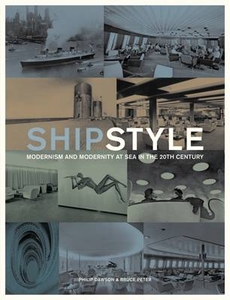-
Home
-
Contributors
-
International
-
Account
-
Information
More From Contributor
- perhaps the first of their kind; or simply larger, stronger, more powerful, or faster than ever before. International in scope, the book uses a signature image of each ship as a starting point, with 250 words of text to outline the unique event that merits the ship`s inclusion & full vessel specifications. Experts in the fields of sailing warships, battleships, ancient & medieval vessels, expeditionary ships, liners & famous literary ships have all contributed to a remarkable volume that is both a scholarly achievement & a visual marvel. ...
Specification boxes to provide all the technical details. ...
- released in July 2018. Written by an industry expert, this detailed, illustrated publication provides ...
Includes:: a gate-fold page of a huge aircraft carrier. ...

Ship Style
Modernism perhaps more effectively than any structure on dry land ever could. On the other hand they were equally powerful statements of imperialism and of commercial pride. This book will examine the development of the Modern Movement in passenger ship architecture in the twentieth century, ranging from small excursion vessels to liners, cruise ships, ferries, and, where necessary, freight vessels.
This page now acts as a permanent archive for this product. Add more information using the comments box below to ensure it can still be found by future generations.
Use our search facility to see if it is available from an alternative contributor.
- Availability: Out Of Stock
- Supplier: Stanfords
- SKU: 9781844861279
Product Description
In ` Vers Une Architecture`, published in the mid 1920s, Le Corbusier wrote about the inspiring qualities of the external design forms of Cunard`s Aquitania. Since then nautical design inspired a great deal of innovative architecture on terra firma. Simultaneously, the 1925 Exposition des Arts Decoratifs made a broad range of eclectic modern styles fashionable
- particularly in the commerical world, whereas Modernism with a capital M, already the design aesthetic of the pre-Stalinist Soviet Union, was associated with social reform, internationalism & a Marxist ideology. In passenger ship design, however, the picture was complicated by a variety of factors. According to Orwell, ships were seen to represent utopian visions of future paradises
- & so represented the ideals of Modernism perhaps more effectively than any structure on dry land ever could. On the other hand they were equally powerful statements of imperialism & of commercial pride. This book will examine the development of the Modern Movement in passenger ship architecture in the twentieth century, ranging from small excursion vessels to liners, cruise ships, ferries, &, where necessary, freight vessels.
Reviews/Comments
Add New
Intelligent Comparison
We couldn't find anything!
Perhaps this product's unique.... Or perhaps we are still looking for comparisons!
Click to bump this page and we'll hurry up.
Price History
Vouchers
Do you know a voucher code for this product or supplier? Add it to Insights for others to use.


 United Kingdom
United Kingdom
 France
France
 Germany
Germany
 Netherlands
Netherlands
 Sweden
Sweden
 USA
USA
 Italy
Italy
 Spain
Spain






 Denmark
Denmark